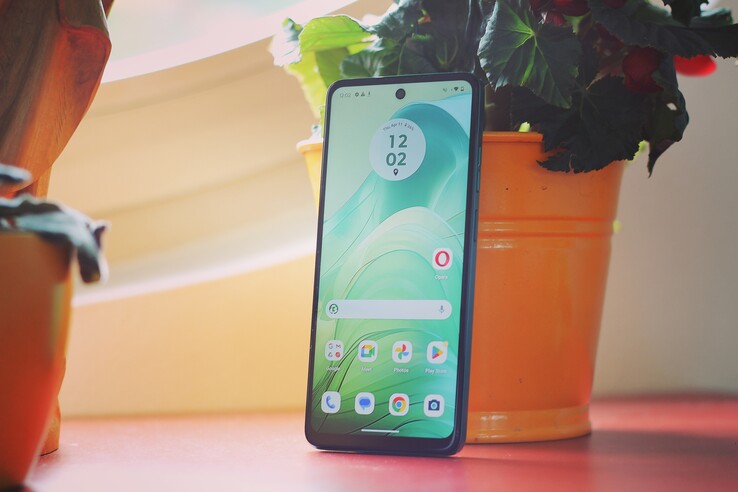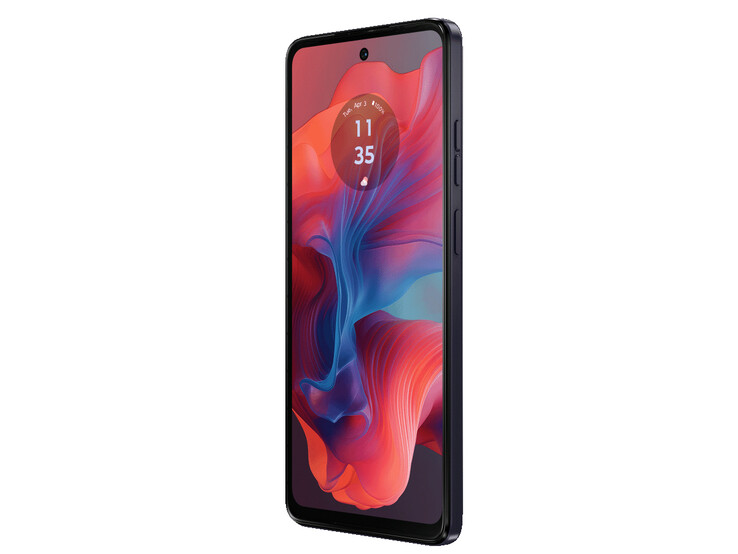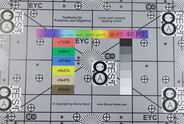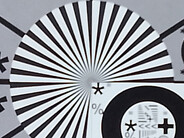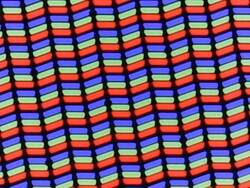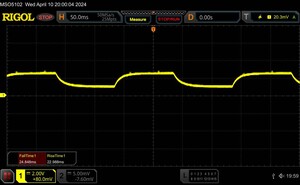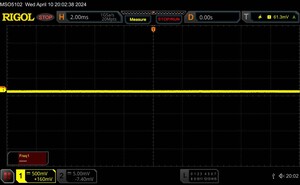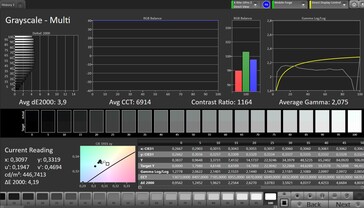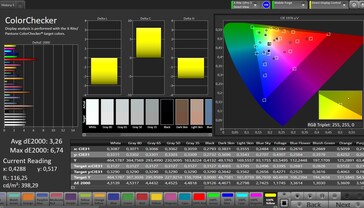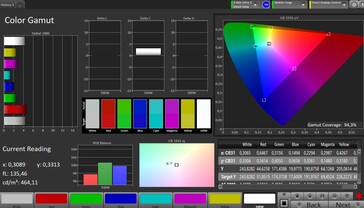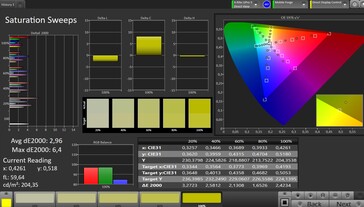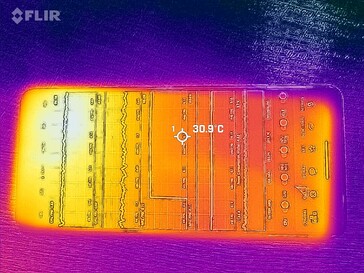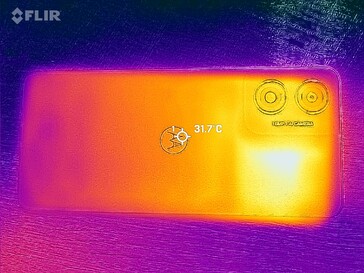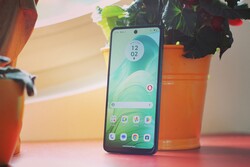Motorola Moto G04 smartphone review – A well-equipped phone for very little money
Possible competitors compared
Rating | Date | Model | Weight | Drive | Size | Resolution | Price from |
|---|---|---|---|---|---|---|---|
| 77.7 % v7 (old) | 04 / 2024 | Motorola Moto G04 T7200 (T606), Mali-G57 MP1 | 179 g | 64 GB UFS 2.2 Flash | 6.56" | 1612x720 | |
| 77.7 % v7 (old) | 03 / 2024 | Xiaomi Redmi 13C Helio G85, Mali-G52 MP2 | 192 g | 128 GB eMMC Flash | 6.74" | 1600x720 | |
| 78.1 % v7 (old) | 09 / 2023 | Motorola Moto G14 T7255 (T616), Mali-G57 MP1 | 177 g | 128 GB UFS 2.2 Flash | 6.50" | 2400x1080 | |
| 73.8 % v7 (old) | 07 / 2023 | Xiaomi Redmi A2 Helio G36, PowerVR GE8320 | 192 g | 32 GB eMMC Flash | 6.52" | 1600x720 |
Case and connectivity – Attractive and stable
In addition to classic black, Motorola also offers its affordable Moto G04 in blue, green and orange—it has certainly chosen a strong color palette. The back is made of plastic which is slightly glittery and has a matt finish. As a result, it isn't as much of a fingerprint magnet. The smartphone is very sturdily built; pressure and twisting don't bother it whatsoever and we couldn't elicit any creaking noises from it.
The phone's material transitions are also very clean and the slightly thicker camera module looks very elegant as it is fitted with a slight curve into the transition to the back. Relatively slim bezels around the screen give the front a very modern look.
64 GB mass storage and 4 GB RAM proved to be a little tight on our test model; models with 128 GB storage and 8 GB RAM are also available internationally. There is a headphone jack on the top edge of the phone and a USB-C port at the bottom. The latter is only connected internally via USB 2.0 speeds, which hardly speeds up data transfers. It is nice to see that Motorola has installed NFC for wireless payment services and tag reading.
Aside from 2 SIM slots, it also features a dedicated microSD card slot which you can use to expand the phone's storage. We tested it using our reference microSD card—an Angelbird V60— and noted pretty decent speeds. During the CPDT benchmark, however, we noted the occasional fall in transfer rates.
| SD Card Reader - average JPG Copy Test (av. of 3 runs) | |
| Average of class Smartphone (5.72 - 58.9, n=69, last 2 years) | |
| Xiaomi Redmi 13C (Angelbird V60) | |
| Motorola Moto G04 | |
| Xiaomi Redmi A2 (Angelbird V60) | |
| Motorola Moto G14 (Angelbird V60) | |
Cross Platform Disk Test (CPDT)
Communication, software and operation – Slow WLAN on the Moto G04
Although the Motorola Moto G04 supports WiFi 5 according to the manufacturer, the smartphone wasn't able to reach the typical speeds—even after several repetitions during our test. Instead, only slow WiFi 4 speeds were possible which limited its transfer rates to around 50 Mbps. Even with just one antenna, we would expect to see better results. Perhaps Motorola can help with a software update.
This device is a 4G phone and all the necessary frequencies for use in Central Europe (where this test was carried out) are supported. However, if you are planning to go on trips further afield, you should check in advance whether the phone can connect to the web in your destination country. When taking some samples during our test period, the phone had to contend with moderate reception at times.
The phone comes with Android 14 installed and barely anything has been changed about Google's operating system by Motorola. Several games come preinstalled on the phone. The Moto G04 is Widevine-certified, meaning you can stream from most major streaming platforms in HD. The manufacturer promises software updates every 2 months until January 2026. This isn't all too long but within this price range, an update promise itself is a rarity.
Despite its low price, the Moto G04 has a 90-Hz touchscreen that can be operated smoothly. The touchscreen remains very responsive right into the corners and along the edges. The physical volume and standby buttons are located on the right-hand side of the case. You can feel for them easily and they have a clear pressure point.
A fingerprint sensor is also integrated into the standby button, which unlocks the phone quickly and reliably once fingerprints have been memorized. In addition, it features a facial recognition function which also works reliably and the light coming from the phone's screen is usually sufficient for recognition even in the dark.
| Networking | |
| Motorola Moto G04 | |
| iperf3 transmit AXE11000 | |
| iperf3 receive AXE11000 | |
| Xiaomi Redmi 13C | |
| iperf3 transmit AXE11000 | |
| iperf3 receive AXE11000 | |
| Motorola Moto G14 | |
| iperf3 transmit AXE11000 | |
| iperf3 receive AXE11000 | |
| Xiaomi Redmi A2 | |
| iperf3 transmit AXE11000 | |
| iperf3 receive AXE11000 | |
Cameras – Surprisingly good in daylight
The Motorola Moto G04 is only equipped with one camera on the back. It is a 16-megapixel lens.
The resulting photos are actually quite decent for this price range, lighter areas aren't overexposed and you can still identify some detail in darker spots. In zoomed-in shots, you can only identify few details and more expensive phones generally do a better job of lightening photos but all-in-all, the main camera delivers good results in daylight.
In low-light scenarios, on the other hand, the lens' weaknesses become apparent: Sharpness drops quite a bit and you can barely identify anything in darker areas of the photos. In 1 lux lighting, the picture is just black.
Videos can be recorded at a maximum of 1080p and 30 fps; the camera's autofocus and exposure adjustment work surprisingly quickly and overall, videos look quite good for the price range.
There is a 5-megapixel selfie camera on the front of the phone. Photos taken using this lens often appear very dark, even in good lighting conditions. When enlarged, the images' sharpness is generally good, but color transitions appear quite coarse and no details are visible in dark areas.
Image comparison
Choose a scene and navigate within the first image. One click changes the position on touchscreens. One click on the zoomed-in image opens the original in a new window. The first image shows the scaled photograph of the test device.
Main camera plantMain camera surroundingsMain camera low light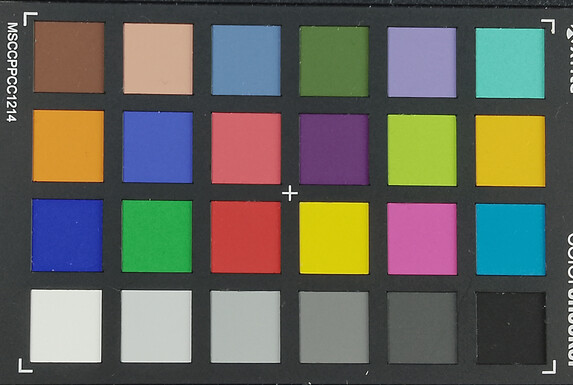
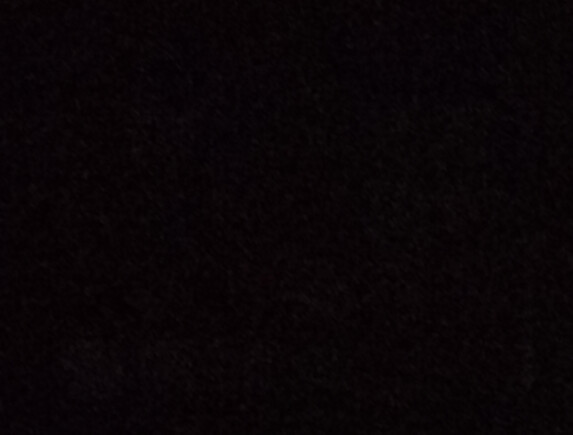
Display – Decent color depiction
The phone's display measures 6.56 inches in diameter, makes use of an IPS panel and has a resolution of 1,612 x 720 pixels. This is quite common for this price range, but the screen appears somewhat blurrier than on higher-resolution screens.
With an average maximum brightness of 396 cd/m², the panel is no outdoor expert: particularly on sunny days, there are strong reflections that obscure the screen content. The phone is therefore more suitable for indoor use and shaded outdoor locations.
Its black level and contrast are average; our tests using a spectrophotometer and the CalMAN software only showed a very slight blue cast. The display's color reproduction is therefore also relatively true to life.
We did not note any PWM flickering even at low brightness levels.
| |||||||||||||||||||||||||
Brightness Distribution: 91 %
Center on Battery: 414 cd/m²
Contrast: 1218:1 (Black: 0.34 cd/m²)
ΔE ColorChecker Calman: 3.26 | ∀{0.5-29.43 Ø4.78}
ΔE Greyscale Calman: 3.9 | ∀{0.09-98 Ø5}
94.3% sRGB (Calman 2D)
Gamma: 2.075
CCT: 6914 K
| Motorola Moto G04 IPS, 1612x720, 6.6" | Xiaomi Redmi 13C IPS, 1600x720, 6.7" | Motorola Moto G14 IPS, 2400x1080, 6.5" | Xiaomi Redmi A2 IPS, 1600x720, 6.5" | |
|---|---|---|---|---|
| Response Times | 2% | 16% | 21% | |
| Response Time Grey 50% / Grey 80% * (ms) | 47.8 ? | 44.9 ? 6% | 34.2 ? 28% | 36.8 ? 23% |
| Response Time Black / White * (ms) | 28.5 ? | 29.2 ? -2% | 27.6 ? 3% | 23.2 ? 19% |
| PWM Frequency (Hz) | ||||
| Screen | -2% | -10% | 1% | |
| Brightness middle (cd/m²) | 414 | 430 4% | 486 17% | 391 -6% |
| Brightness (cd/m²) | 396 | 424 7% | 478 21% | 379 -4% |
| Brightness Distribution (%) | 91 | 92 1% | 92 1% | 94 3% |
| Black Level * (cd/m²) | 0.34 | 0.28 18% | 0.45 -32% | 0.3 12% |
| Contrast (:1) | 1218 | 1536 26% | 1080 -11% | 1303 7% |
| Colorchecker dE 2000 * | 3.26 | 4.06 -25% | 4.68 -44% | 3.31 -2% |
| Colorchecker dE 2000 max. * | 6.74 | 8.11 -20% | 7.33 -9% | 7.67 -14% |
| Greyscale dE 2000 * | 3.9 | 5 -28% | 4.8 -23% | 3.6 8% |
| Gamma | 2.075 106% | 2.35 94% | 2.29 96% | 2.307 95% |
| CCT | 6914 94% | 7813 83% | 7691 85% | 7427 88% |
| Total Average (Program / Settings) | 0% /
-1% | 3% /
-5% | 11% /
5% |
* ... smaller is better
Display Response Times
| ↔ Response Time Black to White | ||
|---|---|---|
| 28.5 ms ... rise ↗ and fall ↘ combined | ↗ 13.7 ms rise | |
| ↘ 14.8 ms fall | ||
| The screen shows relatively slow response rates in our tests and may be too slow for gamers. In comparison, all tested devices range from 0.1 (minimum) to 240 (maximum) ms. » 75 % of all devices are better. This means that the measured response time is worse than the average of all tested devices (20.2 ms). | ||
| ↔ Response Time 50% Grey to 80% Grey | ||
| 47.8 ms ... rise ↗ and fall ↘ combined | ↗ 24.8 ms rise | |
| ↘ 23 ms fall | ||
| The screen shows slow response rates in our tests and will be unsatisfactory for gamers. In comparison, all tested devices range from 0.165 (minimum) to 636 (maximum) ms. » 82 % of all devices are better. This means that the measured response time is worse than the average of all tested devices (31.6 ms). | ||
Screen Flickering / PWM (Pulse-Width Modulation)
| Screen flickering / PWM not detected | |||
In comparison: 53 % of all tested devices do not use PWM to dim the display. If PWM was detected, an average of 8111 (minimum: 5 - maximum: 343500) Hz was measured. | |||
Performance, emissions and battery life – Barely any power, good runtimes
Motorola has opted for a rather slow SoC, even within the very affordable price range, namely the Unisoc T606. Since the phone's screen has a low resolution, its graphics performance during our on-screen tests was still usable, but its performance during the browser benchmarks dropped sharply. In everyday use, this means that you will often have to live with stutters and longer waiting times.
On the other hand, Motorola hasn't been lazy when it comes to the phone's storage, installing UFS 2.2 flash which is fast and is also used in more expensive phones.
We measured a maximum temperature rise of 40.8°C on the device's case under prolonged load. This is not critical, but noticeable. The 3DMark stress test showed us that the SoC's performance remained roughly the same even after repeating a benchmark several times, in other words, the SoC is not throttled.
The speaker on the bottom edge has to make do on its own, so it can only offer mono sound. It is loud enough to fill a medium-sized room but our diagram already confirmed that it offers no bass and only a few lower mids. We were able to confirm this result after our listening test: voices and vocals are clearly understandable, but music sounds flat and very treble-heavy.
You'll usually get a better sound if you connect external speakers or headphones. This can be done via the 3.5-mm jack on the top edge of the case or via Bluetooth. There are several wireless audio codecs to choose from: In addition to standards such as AAC, SBC, aptX, aptX HD and LDAC, the phone also supports more exotic variants such as LC3 and Opus.
The Motorola Moto G04 gets average performance for its price class from its 5,000 mAh battery: In our WLAN test, the device achieved 15:07 hours, which suggests that you will be able to survive a day of moderate use without needing to charge the phone.
A charger is included with the phone but it can only provide a maximum of 10 watts, while the phone explicitly supports up to 15 watts of charging power. This is annoying in many respects: the charging process takes around an hour longer with the included charger. In addition, customers who want to take advantage of the full power may have to buy another charger, which produces additional electronic waste.
| Motorola Moto G04 | Xiaomi Redmi 13C | Motorola Moto G14 | Xiaomi Redmi A2 | Average 64 GB UFS 2.2 Flash | Average of class Smartphone | |
|---|---|---|---|---|---|---|
| AndroBench 3-5 | -53% | 19% | -74% | -12% | 156% | |
| Sequential Read 256KB (MB/s) | 978.7 | 300.2 -69% | 888.6 -9% | 268.9 -73% | 770 ? -21% | 2216 ? 126% |
| Sequential Write 256KB (MB/s) | 389.3 | 179.4 -54% | 538.1 38% | 116.1 -70% | 399 ? 2% | 1837 ? 372% |
| Random Read 4KB (MB/s) | 184.1 | 101.5 -45% | 221.3 20% | 53.6 -71% | 156.6 ? -15% | 294 ? 60% |
| Random Write 4KB (MB/s) | 201.2 | 114.8 -43% | 251.7 25% | 40.5 -80% | 177.7 ? -12% | 334 ? 66% |
Temperature
(±) The maximum temperature on the upper side is 40.7 °C / 105 F, compared to the average of 35.2 °C / 95 F, ranging from 21.9 to 247 °C for the class Smartphone.
(±) The bottom heats up to a maximum of 40.8 °C / 105 F, compared to the average of 34 °C / 93 F
(+) In idle usage, the average temperature for the upper side is 28.7 °C / 84 F, compared to the device average of 32.9 °C / 91 F.
3DMark Wild Life Stress Test
Speaker
Motorola Moto G04 audio analysis
(+) | speakers can play relatively loud (82.2 dB)
Bass 100 - 315 Hz
(-) | nearly no bass - on average 31.1% lower than median
(±) | linearity of bass is average (7.8% delta to prev. frequency)
Mids 400 - 2000 Hz
(±) | higher mids - on average 6.4% higher than median
(±) | linearity of mids is average (8.9% delta to prev. frequency)
Highs 2 - 16 kHz
(±) | higher highs - on average 6.2% higher than median
(+) | highs are linear (6.2% delta to prev. frequency)
Overall 100 - 16.000 Hz
(±) | linearity of overall sound is average (26.3% difference to median)
Compared to same class
» 66% of all tested devices in this class were better, 6% similar, 28% worse
» The best had a delta of 11%, average was 35%, worst was 134%
Compared to all devices tested
» 80% of all tested devices were better, 4% similar, 16% worse
» The best had a delta of 4%, average was 24%, worst was 134%
Xiaomi Redmi A2 audio analysis
(±) | speaker loudness is average but good (79.4 dB)
Bass 100 - 315 Hz
(-) | nearly no bass - on average 30.2% lower than median
(±) | linearity of bass is average (10.2% delta to prev. frequency)
Mids 400 - 2000 Hz
(±) | higher mids - on average 5.6% higher than median
(±) | linearity of mids is average (7.1% delta to prev. frequency)
Highs 2 - 16 kHz
(+) | balanced highs - only 3.3% away from median
(±) | linearity of highs is average (7.8% delta to prev. frequency)
Overall 100 - 16.000 Hz
(±) | linearity of overall sound is average (24.6% difference to median)
Compared to same class
» 59% of all tested devices in this class were better, 7% similar, 34% worse
» The best had a delta of 11%, average was 35%, worst was 134%
Compared to all devices tested
» 74% of all tested devices were better, 6% similar, 20% worse
» The best had a delta of 4%, average was 24%, worst was 134%
Runtimes
| Battery Runtime - WiFi Websurfing | |
| Average of class Smartphone (12.1 - 54.1, n=211, last 2 years) | |
| Motorola Moto G14 | |
| Xiaomi Redmi 13C | |
| Motorola Moto G04 | |
| Xiaomi Redmi A2 | |
Pros
Cons
Verdict – Very affordable with highlights but also some weaknesses
Motorola's Moto G04 is a budget phone that actually left a good impression on us: It features a true-color screen and takes decent photos in daylight. Its battery lasts a long time, its case is stable and beautifully designed and you even get an update promise until 2026. Other highlights include its fast fingerprint sensor, speedy storage, 90-Hz screen and NFC.
However, there are also downsides: Motorola may still be able to fix the phone's slow Wi-Fi with a software update. However, the slow SoC, flat speaker sound and weak power adapter included with the smartphone are compromises you'll have to accept.
Overall, the positive aspects outweigh the negative ones in our eyes if you're only on the hunt for a second phone or really don't want to spend any more money. All-in-all, the Motorola Moto G04 is a good choice.
The Motorola Moto G04 can be had for very little money, while still offering some equipment highlights and an update promise.
A possible alternative: The Redmi 13C from Xiaomi can already be found for a similar price to the Moto G04. It even comes with a 4-year update promise and just as attractive a case.
Price and availability
At the time of writing, the Motorola Moto G04 retails for around US$130 but cannot yet be purchased in the United States.
Motorola Moto G04
- 04/28/2024 v7 (old)
Florian Schmitt
Transparency
The selection of devices to be reviewed is made by our editorial team. The test sample was provided to the author as a loan by the manufacturer or retailer for the purpose of this review. The lender had no influence on this review, nor did the manufacturer receive a copy of this review before publication. There was no obligation to publish this review. As an independent media company, Notebookcheck is not subjected to the authority of manufacturers, retailers or publishers.
This is how Notebookcheck is testing
Every year, Notebookcheck independently reviews hundreds of laptops and smartphones using standardized procedures to ensure that all results are comparable. We have continuously developed our test methods for around 20 years and set industry standards in the process. In our test labs, high-quality measuring equipment is utilized by experienced technicians and editors. These tests involve a multi-stage validation process. Our complex rating system is based on hundreds of well-founded measurements and benchmarks, which maintains objectivity. Further information on our test methods can be found here.




